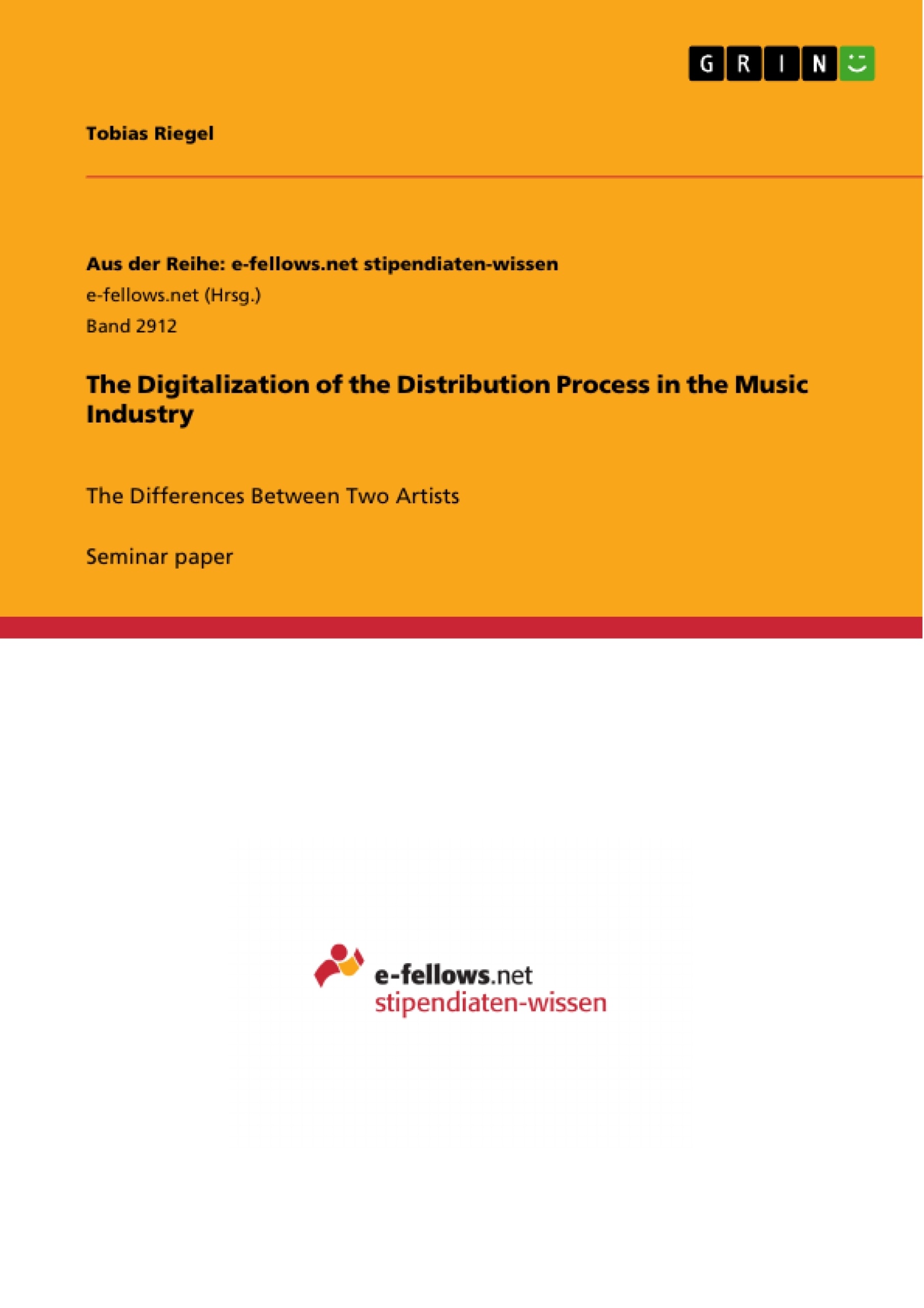Digitalization transforms organizations, professions, politics, education and even the cultural sector, for instance the music industry where this study belongs to. Digital disruption, collaboration and change have affected the music distribution process. But how exactly? And did it influence the balance of power among the actors involved?
The study uses Actor-Network Theory to represent the distribution networks of two artists before and after the start of the digital age: Michael Jackson, as the most successful artist of the 80s; and Macklemore, as the first artist being No.1 without label-backing.
The tracing of their socio-technical networks shows that labels controlled the distribution channels in the past, but digitalization has shifted some power from the label to the artist. It enabled him to handle the distribution process largely on his own. Due to streaming services distributing music is way more efficient nowadays and artists can reach a huge community of streaming users. Social media enables collaboration and new partnerships in the music industry, which are not restricted to an artist's familiar environment. Additionally, it is a platform for viral marketing enabling a closer relationship between artists and their fans. Overall, digitalization has broken up the enduring domination of the major labels and empowered artists to become successful without the backing of them.
Inhaltsverzeichnis (Table of Contents)
- 1 Introduction
- 2 Topic and Area of Focus
- 2.1 Research Question
- 2.1.1 Scope and Level
- 2.2 Context and Background
- 2.3 Phenomenon of Digital Disruption and Change
- 3 Literature and Popular Perspectives
- 4 Actor-Network Theory - Conceptual Perspective
- 4.1 Motivation and Suitability
- 5 Method of Qualitative Research
- 6 Analysis
- 6.1 Choice of Artists for the Case
- 6.2 Case: Application of Actor-Network Theory
- 6.2.1 Michael Jackson's Actor-Network
- 6.2.1.1 Emergence
- 6.2.1.2 Development
- 6.2.1.3 Stabilization
- 6.2.2 Macklemore's Actor-Network
- 6.2.2.1 Emergence
- 6.2.2.2 Development
- 6.2.2.3 Stabilization
- 6.3 Findings and Discussion
- 7 Conclusion
Zielsetzung und Themenschwerpunkte (Objectives and Key Themes)
This study investigates the impact of digitalization on the music distribution process, focusing on the shift in power dynamics between artists and record labels. The research uses Actor-Network Theory to examine the networks of two artists, Michael Jackson and Macklemore, before and after the digital age. The objective is to understand how digital disruption, collaboration, and change have influenced the distribution process and the balance of power among stakeholders in the music industry.
- Digitalization's impact on the music distribution process
- Shift in power dynamics between artists and record labels
- Role of streaming services in music distribution
- Impact of social media on collaboration and marketing in the music industry
- Analysis of actor-networks in the music industry before and after digitalization
Zusammenfassung der Kapitel (Chapter Summaries)
The study begins by outlining the research question and contextualizing the phenomenon of digital disruption and change in the music industry. It then delves into Actor-Network Theory, explaining its motivation and suitability for this study. Chapter 5 focuses on the method of qualitative research used in the analysis. The core of the study lies in Chapter 6, which analyzes the actor-networks of Michael Jackson and Macklemore before and after the onset of the digital age. This analysis explores the emergence, development, and stabilization of their networks, highlighting key actors and relationships within each stage. Chapter 6 concludes with a discussion of the findings and their implications.
Schlüsselwörter (Keywords)
The study focuses on digitalization, music distribution, Actor-Network Theory, streaming services, social media, collaboration, artist-label power dynamics, Michael Jackson, Macklemore, and the music industry. It examines the impact of digital disruption and change on the music distribution process and the resulting shift in power between artists and record labels.
- Citar trabajo
- Tobias Riegel (Autor), 2018, The Digitalization of the Distribution Process in the Music Industry, Múnich, GRIN Verlag, https://www.grin.com/document/449003



